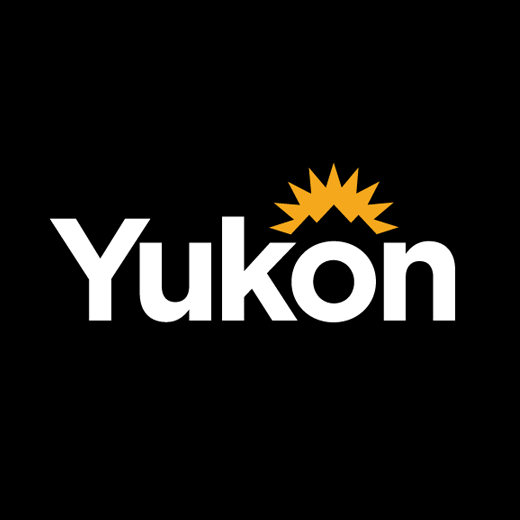fire-ignition
Type of resources
Topics
Keywords
Contact for the resource
Provided by
Formats
Representation types
Update frequencies
status
-

Traditional territories of Yukon first nations and settlement areas of Inuvialuit and Tetlit Gwich'in within the Yukon Territory. A Traditional Territory is an area of the Yukon that the people of a First Nation have traditionally used. A First Nation's Settlement Lands fall inside the boundaries of its Traditional Territory. A First Nation does not own its Traditional Territory, but the First Nation and its benificiaries have a number of rights within their Traditional Territory, both on and off of Settlement Land. This data was built using the 1:250,000 National Topographic Data Base (NTDB) data as the base and the 1:500,000 hardcopy traditional territory maps as signed by individual First Nation chiefs on November 8, 1988 for the line work. The White River First Nation asserted traditional territory boundary in this dataset was updated on November 7, 2024. The Acho Dene Koe First Nation asserted traditional territory boundary in this dataset was updated on June 16, 2025.
-

Fire management zones help guide how wildfires are prioritized and managed and show where wildfires may be used to achieve ecological objectives. Zones are based on relatively constant factors, such as the level of human use or development and the presence of reliable fuel breaks. Distributed from [GeoYukon](https://yukon.ca/geoyukon) by the [Government of Yukon](https://yukon.ca/maps) . Discover more digital map data and interactive maps from Yukon's digital map data collection. For more information: [geomatics.help@yukon.ca](mailto:geomatics.help@yukon.ca)
-

This is point GIS coverage consisting of either fire ignition locations or centroids of fire polygons where the exact location of fire ignition were unknown for fires within the Yukon, spanning a period from 1946 to present. Although the temporal scale of the coverage goes back to late 1940's, Yukon-wide fire detection capability was not fully developed until the 1960's. In addition to this, access to regular aerial mapping was not readily available until that same time period. As a result many fires in the 40's and 50's were simply not recorded or poorly mapped, particularly in the north. For that reason, care must be taken when drawing conclusions from these data as it relates to the early years. Starting 2020 on the data was automatically updated using iFMS. Distributed from [GeoYukon](https://yukon.ca/geoyukon) by the [Government of Yukon](https://yukon.ca/maps) . Discover more digital map data and interactive maps from Yukon's digital map data collection. For more information: [geomatics.help@yukon.ca](mailto:geomatics.help@yukon.ca)
-

*Yukon Aerial Imagery* is distributed from the Government of Yukon imagery repository. This is a dynamic image service containing aerial photographs and LiDAR imagery for locations in the Yukon, Canada. This data is in Yukon Albers equal area projection. It can be viewed and queried in the GeoYukon application: [https://mapservices.gov.yk.ca/GeoYukon](https://mapservices.gov.yk.ca/GeoYukon). For more information: [geomatics.help@yukon.ca](mailto:geomatics.help@yukon.ca).
-

This is a landscape level GIS coverage of large fires within the Yukon, spanning a period from 1946 to present. Original polygon size was limited to 200 hectares, when the first edition of this dataset was completed in 1997. Smaller fires are now being included, especially near communities. It is important to note that in most instances, fire perimeters only were mapped. This means that unburned areas within the perimeter are not accounted for, either in an ecological context or in annual area burned summaries. More recent fires mapped, with the aid of satellite technology may include large unburned patches.Although the temporal scale of the coverage goes back to late 1940's, Yukon-wide fire detection capability was not fully developed until the 1960's. In addition to this, access to regular aerial mapping was not readily available until that same time period. As a result many fires in the 40's and 50's were simply not recorded or poorly mapped, particularly in the north. For that reason, care must be taken when drawing conclusions from these data as it relates to the early years. Distributed from [GeoYukon](https://yukon.ca/geoyukon) by the [Government of Yukon](https://yukon.ca/maps) . Discover more digital map data and interactive maps from Yukon's digital map data collection. For more information: [geomatics.help@yukon.ca](mailto:geomatics.help@yukon.ca)
-

Fire districts are administrative areas where wildland fire resources are allocated and deployed. They fall within one of six larger fire regions. Distributed from [GeoYukon](https://yukon.ca/geoyukon) by the [Government of Yukon](https://yukon.ca/maps) . Discover more digital map data and interactive maps from Yukon's digital map data collection. For more information: [geomatics.help@yukon.ca](mailto:geomatics.help@yukon.ca)
-

Fire regions are the largest management unit where wildland fire resources are allocated and deployed. They can be further subdivided into fire districts. Distributed from [GeoYukon](https://yukon.ca/geoyukon) by the [Government of Yukon](https://yukon.ca/maps) . Discover more digital map data and interactive maps from Yukon's digital map data collection. For more information: [geomatics.help@yukon.ca](mailto:geomatics.help@yukon.ca)
-

Location of centre points of Yukon aerial photographs. Data was produced from heads up digitization of paper flightline index maps Distributed from [GeoYukon](https://yukon.ca/geoyukon) by the [Government of Yukon](https://yukon.ca/maps) . Discover more digital map data and interactive maps from Yukon's digital map data collection. For more information: [geomatics.help@yukon.ca](mailto:geomatics.help@yukon.ca)
 Arctic SDI catalogue
Arctic SDI catalogue